Enhance Customer Experiences (CX) with Custom Retail Software Solutions and Modern Frameworks
From personalized recommendations powered by AI to seamless mobile shopping experiences and real-time inventory management, Custom Retail Software Solutions are revolutionizing the retail industry. These tools aren't just tools anymore—they're strategic assets that enable retailers to understand, predict, and respond to customer needs with unprecedented precision.
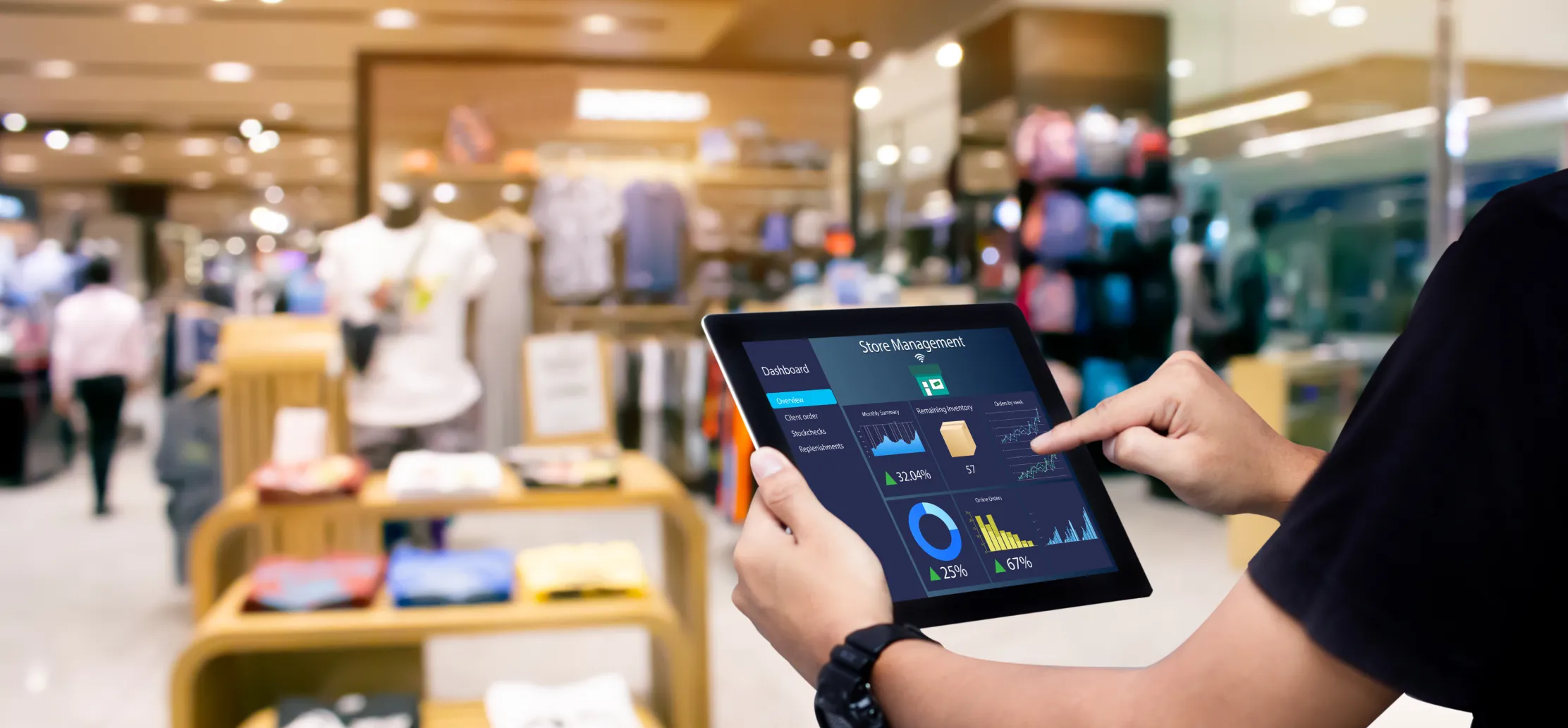
Ever wondered how retailers keep customers coming back for more? Yes, we too are sweet guilty for it.
Maybe it’s because today we as customers are just not looking to shop, but instead, we look for unforgettable experiences. These unforgettable experiences are now much more advanced due to technology intervening in our daily lives.
We've all experienced incredible technologies while shopping – whether it's trying on clothes with VR, finding matching furniture, or getting spot-on recommendations from AI.
The retail landscape is evolving rapidly, driven by technological advancements that are reshaping consumer expectations.
From personalized recommendations powered by AI to seamless mobile shopping experiences and real-time inventory management, Custom Retail Software Solutions are revolutionizing the retail industry. These tools aren't just tools anymore—they're strategic assets that enable retailers to understand, predict, and respond to customer needs with unprecedented precision.
Stick with us till the end of this blog to see how modern software development frameworks are making retail shopping better than ever!
Software Development Frameworks Overview

Software Development Frameworks are like toolboxes for developers—they provide organized sets of tools and rules to build applications more efficiently.
Custom Retail Software Solutions offers tailored features and functionalities that cater to specific business requirements. These solutions ensure that technology is perfectly aligned with the brand's objectives, enhancing operational efficiency and customer engagement.
Software for retail works on frameworks like React, Angular, and Vue.js that are game changers.
To understand it better let's take Alex’s help.
– React is all about building user interfaces that are snappy and responsive.
Alex is shopping on a website powered by React. Each part of the shopping experience, from browsing products to adding items to the cart, is broken down into reusable components. This modular approach not only makes the site faster because it only updates what needs to change, but it also ensures a consistent look and feel across different pages.
So, when Alex adds something to his cart, it happens instantly without needing to reload the entire page.
– Angular is like the heavy-duty workhorse of frameworks, perfect for big and complex projects.
Alex is exploring a retail site built with Angular. It's designed to handle lots of data and user interactions smoothly. Angular's powerful tools, like its Command Line Interface (CLI) for easy management and dependency injection for managing components, ensure that everything from product listings to the checkout process runs quickly and reliably.
So, no matter how busy the site gets, Alex can browse and shop without any hiccups.
– Vue.js is known for its simplicity and flexibility.
When Alex visits a retail site using Vue.js, he notices how fast it loads and how smooth the transitions are between pages. Vue.js makes it easy for developers to create interactive features and animations that enhance the shopping experience. Its lightweight nature means pages load quickly, and its straightforward syntax allows developers to add new features or make updates without a lot of fuss.
So, whether Alex is comparing products or finalizing his purchase, Vue.js ensures his experience is seamless and enjoyable.
In a nutshell, these frameworks—React, Angular, and Vue.js—are the backbone of modern retail websites. They not only make sites faster and more reliable but also provide developers with the tools to create a shopping experience that's both easy to use and visually appealing.
So next time Alex shops online, he can rest assured that retail management software is working behind the scenes to make his shopping journey smooth from start to finish.
Improving Customer Engagement with Latest Frontend Frameworks
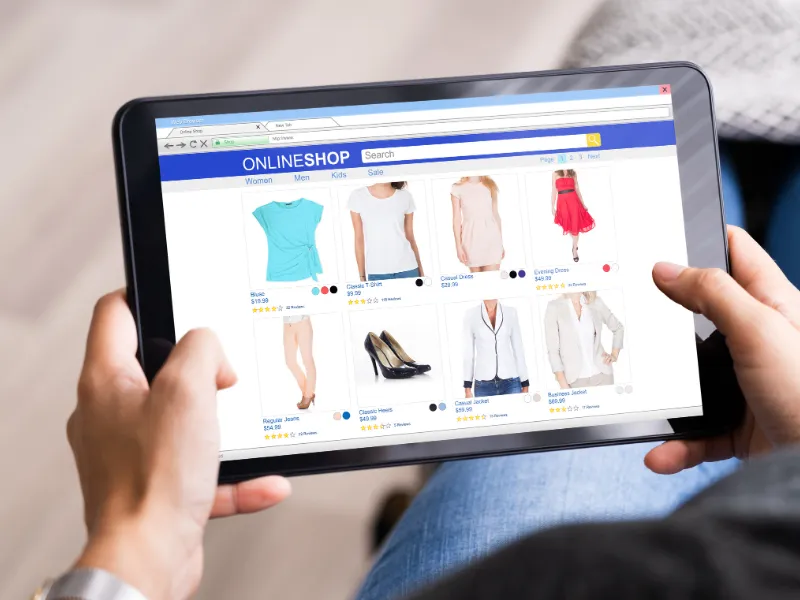
Frameworks in software development help to create responsive and interactive websites that keep shoppers hooked.
Take Amazon, for example. They've been in the news recently for their innovative approach, using React to power their massive online store. With React, Amazon can give customers like Alex a smooth and personalized shopping experience.
Frontend development frameworks like React, Angular, Vue.js, and others like Svelte, Ember.js, and Backbone.js are crucial for making sure shopping online is smooth, whether you're on a computer, tablet, or phone.
Creating Responsive and Interactive User Interfaces:
- React: This framework help to build highly responsive user interfaces by updating only the necessary parts of the page.
For instance, when a customer like Alex browses an online store powered by React, the site remains fast and fluid, with quick updates and seamless transitions. This keeps Alex engaged and satisfied with his shopping experience.
- Angular: Known for its robustness, Angular is perfect for large-scale retail applications. It provides real-time updates through two-way data binding, ensuring that users always sees the latest inventory and personalized recommendations. Angular's powerful tools ensure a smooth and reliable shopping journey, even during peak traffic times.
- Vue.js: This framework is popular for its simplicity and flexibility. It allows developers to create fast-loading and highly interactive mobile apps.
Alex can enjoy a hassle-free shopping experience with quick load times and engaging animations, making his interactions with the app more enjoyable. - Svelte: By doing most of the work at build time, Svelte creates highly efficient and fast apps. This results in an ultra-responsive shopping experience for users, with lightning-fast page loads and seamless interactions.
- Ember.js: Ideal for ambitious web applications, Ember.js provides a smooth and coherent user experience. Its convention-over-configuration philosophy enables developers to quickly build complex apps, ensuring Alex’s shopping journey is intuitive and seamless.
- Backbone.js: This framework offers structure with models, views, and custom events, allowing for the creation of dynamic single-page applications.
Alex can navigate through products without frequent page reloads, enjoying a well-organized and efficient shopping journey.
These frameworks don't just make sites look good—they ensure the sites work well, too. They optimize web and mobile applications for seamless shopping experiences. In a nutshell, Custom Retail Software Solutions helps retailers build websites and apps that are fast, reliable, and fun to use.
In contrast to traditional brick-and-mortar stores, where customer engagement is limited to physical interactions, retail management software brings a plethora of advancements:
- Accessibility and Convenience: Unlike physical stores, online retail platforms are accessible 24/7 from anywhere in the world. Alex can shop at his convenience, without the constraints of store hours or location.
- Personalization: These frameworks allow for personalized shopping experiences based on customer preferences and browsing history. For example, Alex receives tailored product recommendations and promotions, making his shopping experience more relevant and enjoyable.
- Speed and Efficiency: With real-time updates and fast load times, Alex can browse, select, and purchase products quickly. This efficiency is a significant improvement over the time-consuming nature of physical shopping.
- Enhanced Interactivity: Features such as interactive product displays, virtual try-ons, and customer reviews provide a richer shopping experience. Alex can interact with the products and get a better understanding before making a purchase.
- Data-Driven Insights: Retailers can leverage data analytics to understand customer behavior and preferences, allowing for more informed decision-making and targeted marketing strategies. This level of insight and adaptation is not possible in traditional retail settings.
In summary, retailers can enhance customer experiences by offering smooth, reliable, and easy-to-use web or mobile apps powered by modern software development frameworks
By moving beyond the limitations of brick-and-mortar stores, Software for retail offers customers like Alex a seamless, personalized, and engaging shopping journey. Stick with us to see how these advancements in Custom Retail management software are continuously reshaping the retail landscape, making shopping more exciting and satisfying.
Transform your business with cutting-edge Automation, Innovation, and Enhanced Customer Journeys.
Experience the difference with TRooTech's expert Digital Transformation Services.
Enhancing Platforms with Modern Backend Frameworks
Backend frameworks are like the engine behind a car—they power everything that users interact with on e-commerce platforms. They handle data, security, and the logic that makes websites and apps work smoothly. Popular backend frameworks like Django, Node.js, and Laravel play a crucial role in building robust and efficient online stores.
Custom Retail Software Solutions are designed to integrate seamlessly with various backend frameworks. This seamless integration boosts the performance and reliability of online stores, enabling retailers to deliver superior user experiences and robust security.
Why Backend Frameworks Matter?
Backend frameworks simplify the development process by providing tools and libraries to manage databases, process transactions securely, and handle user interactions seamlessly. Without them, creating a reliable and scalable e-commerce platform would be much more challenging.
Key Backend Frameworks:
- Django: Built with Python, Django includes everything developers need to build complex web applications. It’s great for managing large amounts of data and ensuring transactions are secure. To build a framework for Large-Scale eCommerce Solutions consider hiring Django Developers.
- Node.js: This framework uses JavaScript to build fast and scalable network applications. It’s ideal for real-time features like chat support or updating inventory instantly. Hire a NodeJS Developer to build robust retail management software.
- Laravel: Known for its elegant syntax and comprehensive features, Laravel is excellent for building feature-rich web applications. Due to its complex features, we recommend you hire a Laravel Developer.
Let’s understand it better way through taking an example of Apple:
Apple’s success in online retail is powered by these backend frameworks.
Django manages its extensive product inventory and ensures every transaction, from iPhone purchases to app downloads, is secure and efficient.
Node.js keeps its website lightning-fast, with real-time updates on product availability and personalized recommendations.
Meanwhile, Laravel ensures their mobile app is user-friendly and consistent across all devices, making shopping with Apple effortless and enjoyable for millions of customers worldwide.
Industry giants like Apple have already implemented the best software development frameworks to lead the charge in delivering exceptional customer experiences in retail.
Personalization and Data Analytics:
Like, who wouldn't want that personalized touch that makes you feel special? In retail, Custom Retail Software Solutions go beyond just making websites look good—they're about creating experiences that speak directly to you.
This is where integration with Customer Data Platforms (CDPs) comes into play. These platforms are like treasure troves of information about your shopping habits, preferences, and behaviors. They allow frameworks to gather and analyze this data in real time.
Retail ERP software streamlines various backend processes, from inventory management to order fulfilment, ensuring that the right products are available at the right time.
Meanwhile, retail CRM software focuses on managing customer interactions and data, helping retailers understand customer behavior, preferences, and purchase history.
The use of retail ERP software and retail CRM software also supports seamless omnichannel experiences.
What are Customer Data Platforms (CDPs)?
CDPs are specialized software platforms that collect and manage customer data from various touchpoints, such as websites, mobile apps, and in-store interactions.
They consolidate this data into unified customer profiles, which include details like browsing history, purchase patterns, demographics, and preferences.
By understanding individual customer preferences and behaviours, retailers can tailor their marketing efforts, product recommendations, and promotions effectively. This not only enhances customer satisfaction but also boosts engagement and loyalty.
By integrating with CDPs, frameworks enhance their capability to provide seamless and personalized user experiences, ultimately driving conversions and revenue for retailers.
The Role of Analytics Frameworks:
Analytics frameworks like Apache Kafka and Spark complement CDPs by processing and interpreting large volumes of real-time data.
Apache Kafka enables seamless data streaming, allowing retailers to update product offerings and promotions instantly based on current trends and customer interactions.
Meanwhile, Apache Spark provides deep insights into customer behaviour patterns, helping retailers understand what drives purchasing decisions and refine their strategies accordingly.
By leveraging insights from CDPs and analytics frameworks, retailers can boost customer engagement through personalized marketing campaigns, targeted promotions, and proactive customer service.
– For example, a retail website using these technologies can recommend products based on recent purchases or offer discounts tailored to individual preferences, creating a more compelling and relevant shopping experience.
This perfect blend of personalization through data collection and analytics not only enhances customer satisfaction but also fosters long-term loyalty and advocacy.
Harness the full potential of ERP and CRM to accelerate customer engagement.
Reach out to TRooTech for expert software development solutions.
Omni-channel Retailing

Omnichannel retailing leverages integrated sales and communication channels, synchronizing online platforms, mobile apps, and physical stores into a cohesive customer experience. This strategic alignment ensures seamless interaction across all touchpoints, enhancing convenience and consistency.
As retailers aim to blend online convenience with in-store experiences, achieving a seamless integration across all touchpoints becomes essential for enhancing customer satisfaction and loyalty.
Implementing robust retail management software and investing in retail software development are critical steps towards achieving this seamless integration and delivering exceptional omnichannel experiences.
Omnichannel integration is not only pivotal but also boosts customer satisfaction by providing a unified shopping journey but also enables retailers to leverage data analytics and personalized marketing strategies effectively.
Research collected by Think With Google indicated that omnichannel strategies help generate around 80% of the in-store visits by customers.
Furthermore, as much as 74% of customers do online research before actually visiting a physical store.
As retailers aim to blend online convenience with in-store experiences, achieving a seamless integration across all touchpoints becomes essential for enhancing customer satisfaction and loyalty.
Here's a more detailed illustration of how major frameworks support the integration of online and offline channels for a seamless shopping journey, along with global brand examples:
- React: Known for its component-based architecture, React allows brands like Nike to maintain consistent user interfaces across web and mobile platforms. This consistency ensures that customers experience a seamless transition whether they're browsing online or in-store.
- Angular: Angular's robust framework supports scalable web applications that integrate smoothly with physical retail environments. For example, Starbucks uses Angular to unify its online ordering system with in-store operations, ensuring a seamless experience for customers whether they order from their phones or visit a store.
- Vue.js: Vue.js excels in rapid frontend development, making it ideal for brands like IKEA to create interactive and responsive interfaces. IKEA leverages Vue.js to enhance the digital shopping experience, allowing customers to seamlessly browse products online and access personalized recommendations in-store.
- Node.js: As a backend framework, Node.js enables real-time data synchronization crucial for omni-channel retail strategies. Walmart utilizes Node.js to synchronize inventory management and customer data across online platforms and physical stores, ensuring accurate product availability and personalized customer interactions.
Now, to understand it in a better way, let's look at the prime example:
Alibaba's HEMA, a new offline supermarket chain in China that provides its consumers with a seamless omnichannel experience, is one example of a retailer that changed its direction and succeeded.
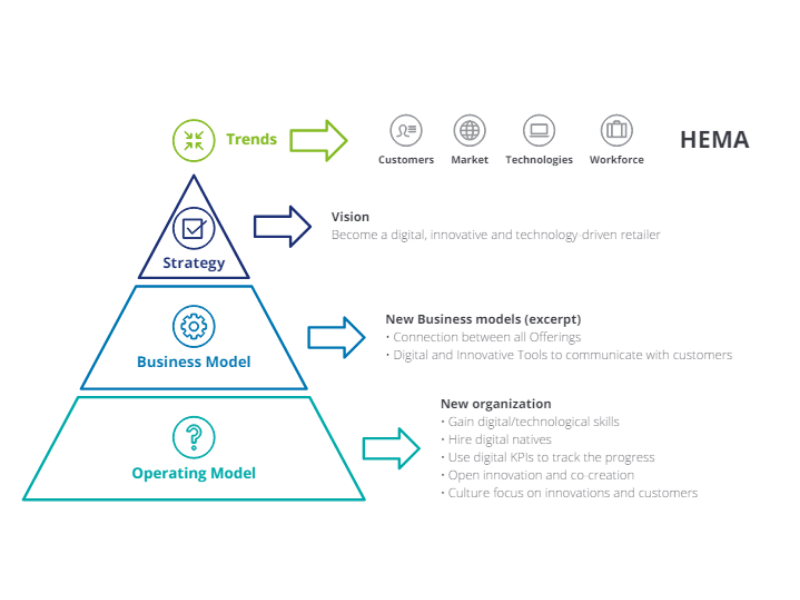
Alibaba's HEMA stores in China are a prime example of how modern technology improves shopping experiences. By blending online and offline shopping seamlessly, HEMA offers features like interactive sample stations, a handy mobile app for in-store tasks, and easy home delivery.
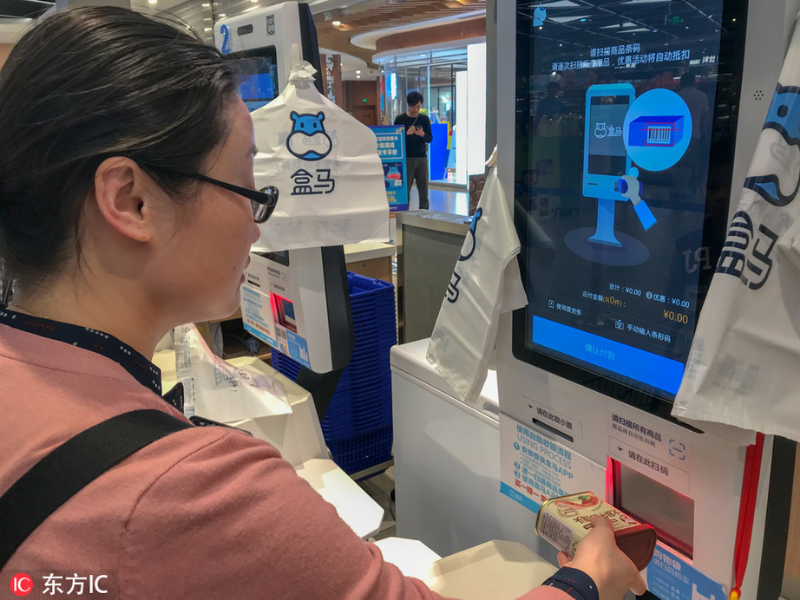
This approach enhances convenience and meets customer needs effectively. HEMA's shift to an omnichannel strategy, supported by advanced technology, shows how Alibaba is leading in innovative retail practices, making shopping easier and more enjoyable for everyone.
Security and Compliance
After focusing on enhancing customer experiences through technology, ensuring robust security measures is essential to protect sensitive data and transactions, maintaining trust and reliability.
In the digital age, retailers handle vast amounts of sensitive customer data, including personal details, payment information, and browsing histories. This data is a prime target for cybercriminals, who seek to exploit vulnerabilities for financial gain or malicious purposes. A single data breach can result in severe consequences, such as financial losses, legal penalties, and damage to a brand’s reputation.
Therefore, implementing robust security measures is not just about compliance; it’s about protecting customers and maintaining their trust.
Cybersecurity frameworks like OWASP (Open Web Application Security Project) and best security practices help developers identify and mitigate vulnerabilities in applications, ensuring that retail platforms are secure from cyber threats.
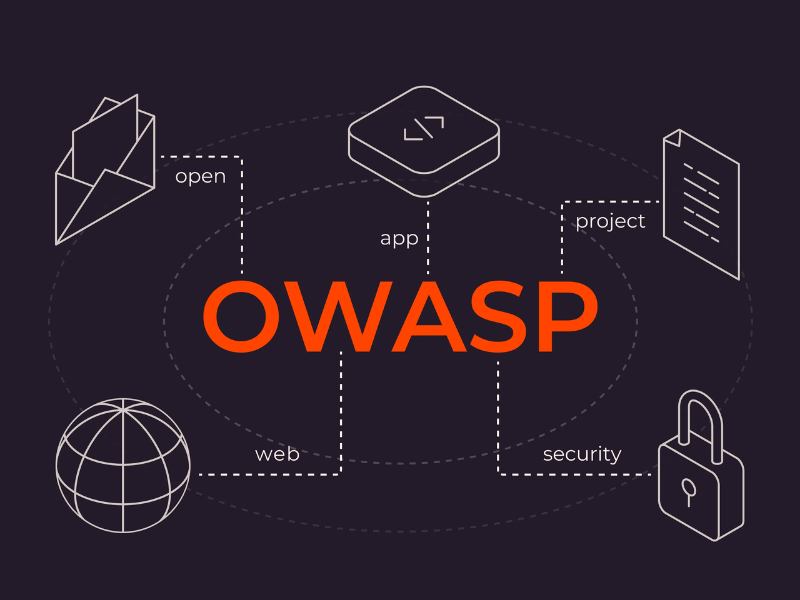
Integrating security practices into the software development lifecycle, known as DevSecOps, is another effective strategy. This approach involves continuous monitoring and improvement of security measures throughout the development process, rather than addressing vulnerabilities after they occur.
By incorporating software development metrics to track and evaluate security performance, retailers can proactively identify and address potential threats, ensuring a secure environment for customer data and transactions.
Implementing Cybersecurity Frameworks
OWASP Guidelines
OWASP provides a comprehensive set of guidelines and tools to help developers secure web applications.
These include:
- Secure Coding Practices: Writing code that is resilient to attacks such as SQL injection, cross-site scripting (XSS), and cross-site request forgery (CSRF).
- Regular Audits and Penetration Testing: Continuously testing applications to identify and fix vulnerabilities.
- Threat Modeling: Assessing potential threats and vulnerabilities during the design phase to mitigate risks before they become issues.
Security Practices
Effective security implementation involves several key practices:
- Encryption: Ensuring that data, both at rest and in transit, is encrypted using strong algorithms. This makes it difficult for unauthorized parties to access the information.
- Authentication and Authorization: Implementing multi-factor authentication (MFA) and strict authorization protocols to ensure that only authorized users can access sensitive data and systems.
- Monitoring and Logging: Continuously monitoring systems for unusual activity and maintaining logs to detect and respond to security incidents promptly.
Compliance with Industry Regulations
For GDPR compliance, retailers must:
- Obtain Consent: Explicitly ask customers for permission to collect and use their data.
- Data Access and Deletion Rights: Allow customers to access their data and request its deletion.
- Secure Storage: Ensure that personal data is stored securely and accessed only by authorized personnel.
PCI-DSS Compliance
For PCI-DSS compliance, retailers must:
- Encrypt Cardholder Data: Use strong encryption to protect payment information.
- Maintain Secure Networks: Implement firewalls and other security measures to protect against unauthorized access.
- Regular Monitoring and Testing: Continuously monitor networks and test security systems to identify and address vulnerabilities.
By integrating these cybersecurity frameworks and compliance measures into the software development lifecycle, retailers can create secure and reliable platforms. This not only protects against cyber threats but also ensures a seamless and safe shopping experience for customers.
Enhance your security strategy with TRooTech's expert consultation services.
Partner with us to ensure smooth regulatory compliance.
Future Trends in Retail Technology
The retail industry is continuously evolving, with software development frameworks playing a crucial role in this transformation. Looking ahead, several trends are poised to shape the future of retail technology.
Let’s have a look at a few of them that our experts believe in:
Increased Adoption of Microservices Architecture:
Microservices allow for the development of modular, scalable applications. This approach enables retailers to update specific parts of their systems without disrupting the entire operation, leading to more agile and responsive platforms.
Progressive Web Apps (PWAs):
PWAs offer a seamless user experience by combining the best features of web and mobile apps. They are fast, reliable, and can work offline, providing customers with a smooth shopping experience regardless of their device or internet connectivity.
Enhanced API Integrations:
As retailers aim to provide omnichannel experiences, the need for robust API integrations will grow. APIs will facilitate seamless data exchange between different systems, ensuring a consistent and integrated shopping journey.
These trends will significantly impact the retail industry by improving scalability, performance, and user engagement, making the shopping experience more efficient and enjoyable for customers.
In addition to advancements in software development frameworks, emerging technologies like blockchain and AI are set to revolutionize the retail landscape.
Blockchain for Supply Chain Transparency:
Blockchain technology can provide unparalleled transparency and security in the supply chain. By creating an immutable ledger of transactions, blockchain ensures that every step of the supply chain is recorded and verifiable. This transparency helps in building trust with customers by providing detailed information about product origins, authenticity, and ethical sourcing practices.
For instance, Walmart has already implemented blockchain to track the journey of its produce, ensuring quality and safety for consumers.
Artificial Intelligence for Personalized Shopping Recommendations:
AI is transforming the retail sector by enabling highly personalized shopping experiences. Machine learning algorithms analyze vast amounts of customer data to identify patterns and preferences. This allows retailers to offer personalized product recommendations, targeted marketing campaigns, and dynamic pricing strategies.
For example, Amazon uses AI-driven recommendation engines to suggest products based on individual browsing and purchasing behaviour, significantly enhancing customer satisfaction and driving sales.
Augmented Reality (AR) and Virtual Reality (VR):
AR and VR technologies are reshaping the way customers interact with products. AR apps allow customers to visualize how products will look in their homes or on themselves, enhancing the online shopping experience. VR can create immersive virtual stores, providing customers with an in-store experience from the comfort of their homes.
IKEA’s AR app, which lets customers place virtual furniture in their living spaces, is a prime example of this trend.
Internet of Things (IoT):
Retailers are using a variety of strategies to meet the ever-increasing demands of their customers, including the implementation of mobile payment alternatives, scan-and-go systems, and smart shelves. Still, the Internet Of Things (IoT) is the source of most of these.
Luxury brand retailer Burberry employs IoT to provide their customers with an enjoyable shopping experience. It tracks products using RFID tags and gives users tailored recommendations based on their tastes.
According to Deloitte, retailers' increasing adoption and use of IoT is expected to provide more consumer data, which will enable them to provide more individualized experiences to customers. Anticipated is the inventive disruption to upend long-standing conventional business models and render outdated pre-existing guidelines for growth or success.
The Frictionless notion is being aided by IoT alongside AI and machine learning.
Conclusion
Custom Software Development Services and its frameworks offer a wealth of benefits for the retail sector, transforming how businesses engage with customers and manage their operations. However, keep in mind that technology ought to complement rather than undermine your customer-centric strategy.
It is imperative for businesses to remain ahead of the curve as the software development industry continually changes due to evolving market dynamics, user demands, and technology improvements. Being a top bespoke software development business, TRooTech is committed to providing high-quality solutions that are specifically built to meet your demands and has experience with the newest technologies.
We enable organizations to turn concepts into reality and thrive in the digital age by emphasizing cooperation, innovation, and customer-centricity. Selecting us as your reliable software development partner launches you on an innovative, transformative, and successful journey.
For assistance finding the ideal software solution for your unique needs, get in touch with us for a FREE consultation. To successfully and efficiently achieve your vision, have a look at our mobile app development and Software Development Outsourcing services.
FAQs
Retail management software integrates inventory management, sales tracking, and customer data across all retail channels, enabling seamless operations and improved efficiency. Custom Retail Software Solutions tailored to specific business needs further enhance these capabilities by integrating with existing frameworks in software development.
Data analytics in omnichannel retail allows retailers to analyze customer behaviour, preferences, and trends across multiple channels. This insight enables personalized marketing strategies and targeted promotions, enhancing customer engagement and loyalty. Retail management software and retail software development play crucial roles in implementing effective data analytics strategies.
Personalized marketing leverages customer data to deliver targeted messages and promotions based on individual preferences and purchase history. This approach enhances customer satisfaction by providing relevant offers and recommendations, driving sales and loyalty. Integrating retail CRM software into omnichannel strategies supports personalized marketing efforts effectively.
Seamless integration requires aligning backend systems with frontend user interfaces across all retail channels. Retail ERP software facilitates centralized data management and operational consistency, while frameworks in software development ensure compatibility and scalability. Custom Retail Software Solutions are essential for tailoring integration processes to meet specific business needs.
Customer data platforms (CDPs) unify customer data from various touchpoints into a single view, enabling retailers to deliver personalized experiences. This includes targeted recommendations, customized promotions, and consistent interactions across online, mobile, and physical channels. Integrating CDPs with retail management software enhances data-driven decision-making and improves customer satisfaction.

